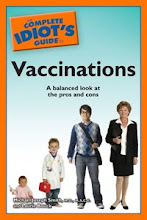The American Academy of Microbiology just released a Microbes & Oil Spills FAQ that explains how microbes can help clean up oil spills such as the 2010 spill in the Gulf of Mexico. The microbes that can consume and break down different types of oil are mostly bacteria and fungi.
The FAQ proved once again the amazing versatility of bacteria, a topic I've blogged about before. Bacteria native to the area of the spill, who draw their energy from consuming and breaking down oil, reproduce to increase their numbers when more oil is present in the water, and slow reproduction when less oil is present.
The FAQ pointed out that the oil leaked in a spill can outpace the microbes' ability to respond to it, and microbes can't always break down oil components easily or quickly. But the microbes' ability to remove some oil from the water and to expand and contract their numbers in response to what's in the water is impressive.
Although bacteria can spontaneously help mitigate the environmental impact of an oil spill, however, we can't control how they will respond to an environment that we create. Our overuse of antibiotics, for example, has contributed to the rise of antibiotic-resistant bacterial superbugs.
A CBC study of bacteria in raw chicken, reported on the Association of Health Care Journalists' Covering Health blog, found antibiotic-resistant bacteria in all the samples tested. Why? Because the chicken farmers gave large amounts of unnecessary antibiotics to healthy chickens so that they would grow larger.
Bacteria have survived because they are adaptable; I hope that one day we can plan better for both the advantages and the disadvantages of this ability.
Subscribe to:
Post Comments (Atom)




No comments:
Post a Comment